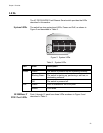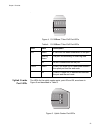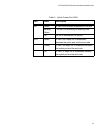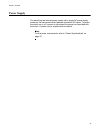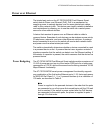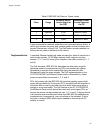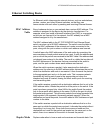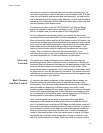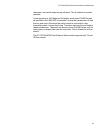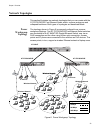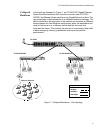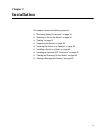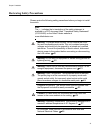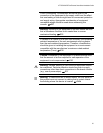Chapter 1: Overview
28
end node can receive or transmit data, but not both simultaneously, the
end node is operating in what is referred to as half-duplex mode. If an end
node can both receive and transmit data simultaneously, the end node is
said to be operating in full-duplex mode. Naturally, an end node capable of
operating in full-duplex can handle data much faster than an end node that
can only operate in half-duplex mode.
The twisted pair ports on the AT-FS750/24POE Fast Ethernet Smart
switch can operate in either half-or full-duplex mode. They are IEEE
802.3u-compliant and you can set them to Auto-Negotiation.
For Auto-Negotiation to operate properly on a switch, the end nodes
connected to the switch should also use Auto-Negotiation. If an end node
does not have this feature and has a fixed duplex mode of full-duplex, the
result will be a duplex mode mismatch between the end node and a switch
port. A port on the Fast Ethernet switch connected to an end node with a
fixed duplex mode of full-duplex will operate at only half-duplex. This
results in the end node using full-duplex and the switch port using half-
duplex. This can produce network performance problems. If you
encounter this situation, you must configure the port on the end node to
use Auto-Negotiation or, if it lacks that feature, to half-duplex.
Store and
Forward
The switch uses store and forward as the method for receiving and
transmitting frames. When a Ethernet frame is received on a switch port,
the switch does not retransmit the frame out the destination port until it has
received the entire frame and stored the frame in a port buffer. It then
examines the frame to determine if it is a valid frame. Invalid frames, such
as fragments or runts, are discarded by the switch. This ensures that only
valid frames are transmitted out the switch ports and that damaged frames
are not propagated on your network.
Back Pressure
and Flow Control
To maintain the orderly movement of data between the end nodes, an
Ethernet switch may periodically need to signal an end node to stop
sending data. This can occur under several circumstances. For example, if
two end nodes are operating at different speeds, the switch, while
transferring data between the end nodes, might need to instruct the faster
end node to stop transmitting data to allow the slower end node to catch
up. An example of this would be when a server operating at 100 Mbps is
sending data to a workstation operating at only 10 Mbps.
How a switch signals an end node to stop transmitting data differs
depending on the speed and duplex mode of the end node and switch
port. A twisted pair port operating at 100 Mbps and half-duplex mode will
stop an end node from transmitting data by forcing a collision. A collision
on an Ethernet network occurs when two end nodes attempt to transmit
data using the same data link at the same time. A collision causes end
nodes to stop sending data. When the switch needs to stop a 100 Mbps,
half-duplex end node from transmitting data, it forces a collision on the
data link, which stops the end node. When the switch is ready to receive



